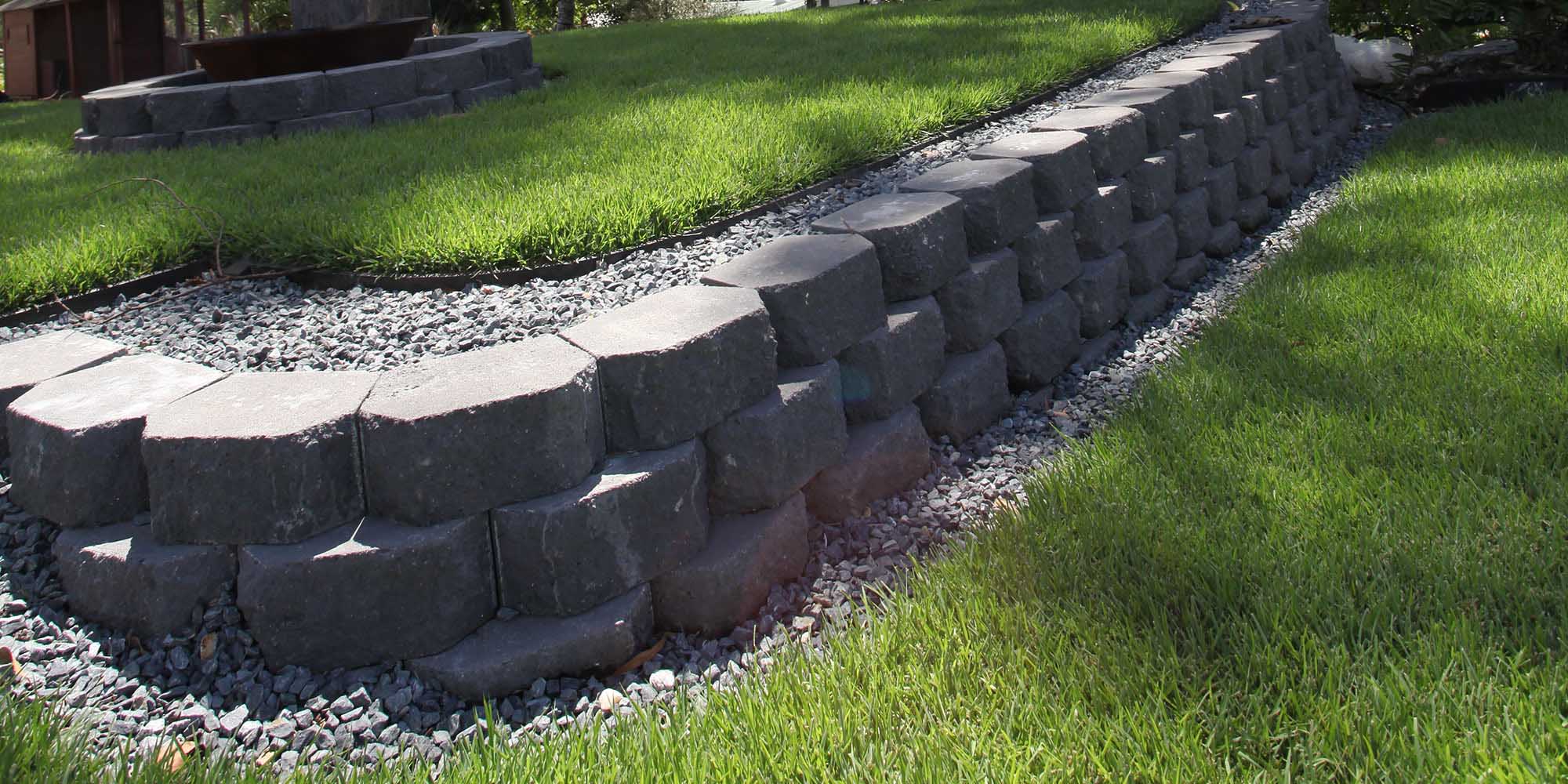You might be forgiven for thinking that one retaining wall is pretty much like the other, but there you’d be wrong. There are plenty of different types of retaining wall around, and if you haven’t considered the differences before, it’s helpful to examine the characteristics, pros and cons of each type.
Here are three of the most common types of retaining wall.
Gravity retaining walls – “Dry Stacked” blocks
This type of wall is constructed with a slight backwards lean or with vertical blocks with enough mass to allow gravity to do all the work. There’s no need for deep foundations to hold gravity walls up: just a nice, level, solid base, good drainage and minimal digging or drilling. If you have solid rock or shale at the base of the soil you’re retaining, gravity walls can be ideal as you can avoid expensive post hole drilling or excessive excavation of hard, rocky material.
Sleeper retaining walls
Sleeper walls rely on support posts being sunk deep into the foundation soil: usually the depth of the posts is the same as the height of the wall, although sometimes a little less depending on the qualities of the soil. Bear in mind that the sleepers themselves may not be the main cost involved with this type of wall – the steel beams or posts and the post hole drilling itself can form a major part of the expenses. The advantages of sleeper walls are mainly in how close they can be to the boundary fences, saving space. Sleepers were all traditionally timber, but concrete sleepers have gained in popularity over the last few years due to better durability and longevity than even the best treated timber.
Cantilever retaining walls
Cantilever reinforced walls use a wide, steel reinforced concrete footing buried in the soil in front of (toe) or behind the wall (heel) to provide support for the wall (stem). They are more commonly used in commercial projects rather than for residential use as the cost of such a large, steel reinforced footing can be prohibitive for the average domestic project However many designer homes utilise this method due to efficiency in tight spaces, great strength and the boutique options available in reinforced Architectural Designer masonry blocks with a stunning variety of finishes and colours.
Each of these different types of retaining walls can be constructed from different materials. Here are some of the most common and popular materials that can be used in retaining walls.
Concrete blocks
Strong and sturdy concrete blocks can be interlocked to create a retaining wall that is extremely long-lasting and durable, even under pressure. Plus, concrete blocks are very low maintenance.
Poured concrete
Unlike a concrete block wall, in this type of structure the concrete is poured into position and sets to form a dense, strong and stable retaining wall.
Natural stone
Stone is naturally strong and sturdy, and will create a reliable, long-lasting and very natural looking retaining wall. It’s expensive though.
Brick
While bricks are a popular choice, and are reasonably durable and low maintenance, they can’t compete with concrete and stone in terms of strength, and don’t come with an interlocking system to hold the wall together tightly.
Timber
Timber’s big advantage is that it looks great in a retaining wall; however, it’s also not as strong as concrete or stone, and will eventually rot away or be destroyed by termites. Plus, timber retaining walls need regular maintenance and treatment to ensure they last as long as possible.
Gabion
Never heard of gabion? You’ve probably seen it though – it’s a wall created from a steel or wire cage that is then filled with stones, rocks or rubble. This type of wall is good for preventing soil erosion, but not as good if you need strength and stability.
So, which is the best choice for me?
While it comes down to project requirements and personal preference, there’s a clear winner when it comes to strength, durability and maintenance requirements – and that’s a retaining wall made from concrete blocks. Concrete provides the most strength, structure and support of any retaining wall material. And while poured concrete walls may have a slight edge in strength, solid concrete can be susceptible to chemical damage and cracking – leaving a concrete block wall as the most durable and longest-lasting choice. Plus, concrete has the added benefit of being cheaper and more cost-effective than most other materials, and doesn’t require much time-consuming and costly maintenance. Concrete blocks are a great choice for your retaining wall, whatever size or location, whether using gravity wall construction or cantilevered designs. Access a quality range of concrete blocks for retaining walls here.

